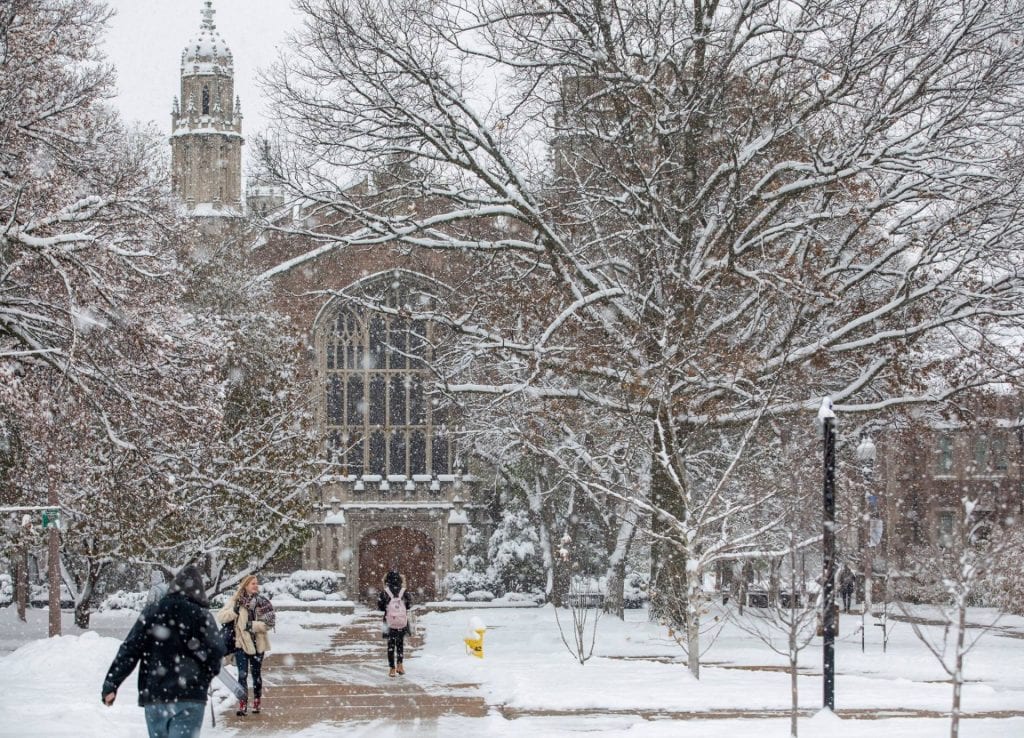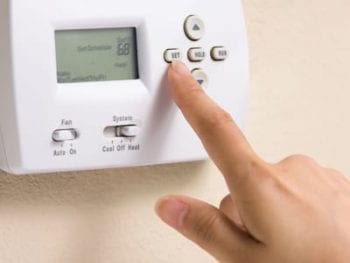With shorter days and often below-freezing temperatures, winter comes with greater energy needs. While it’s tempting to turn the heat all the way up to make it through the cold season, being mindful of our heating habits is critical to avoid energy losses and unnecessary consumption.
The five tips below will help you maintain a comfortable and cozy home (and body!) this winter while keeping you away from exorbitant heating bills.
1. Lower Your Thermostat
Your thermostat settings should shift naturally with the seasons.
Using external temperatures is a great base for determining your indoor temperature. In the winter months, a temperature in the range of 67 – 70º is recommended for when you’re at home. When you are asleep or away, turn your thermostat back 10° to 15° for eight hours and save up to 10% on your heating and cooling bills. A programmable thermostat can make it easy to set back your temperature. The Residential Smart Thermostat Rebate by Ameren allows you to purchase one of ENERGY STAR’s certified Smart Thermostats and qualify for up to $100 cash back, in addition to helping you save on energy costs!
2. Seal Up Insulation Gaps
Energy is most frequently lost from improper insulation. Look and feel closely around your doors and windows to make sure there are no air leaks. Gaps and holes can temporarily be fixed with insulation materials like weather stripping or caulk, but think about looking into more durable changes for yearlong insulation and energy saving.
If you live on campus and notice an insulation gap in your building, please contact ResLife at reslife@wustl.edu or file a Maintenance Request online. Students living in off campus residences managed by Quadrangle should contact their RCD.
3. Adjust Your Fans
Setting your ceiling fans to a clockwise rotation instead of the usual counterclockwise will redistribute the heat in your living space. As the hot air rises and tends to get “stuck” under the ceiling, the fan’s clockwise rotation will push the heat downward allowing for a more even distribution of the heat. A low-speed setting is sufficient to allow this process to happen.
4. Add a Humidifier
During the winter, indoor air can be dry and uncomfortable, and has a hard time retaining heat. Installing a humidifier in your home will moisten the air and consequently allow for a better heat conservation. Houseplants are also great humidifiers! They naturally release moisture in the air and can substitute or complement an electric humidifier, as well as add a nice bit of greenery to your home.
5. Dress in Layers
During the winter, your body is exposed to abrupt weather changes, as you are frequently going from outdoor freezing temperatures to indoor often-overheated spaces. Wearing layers allows you to easily adjust to your changing environments. And remember, it’s always better to be over-prepared. Too hot? Just take a layer off!
There are many other ways you can make sure to use your energy efficiently and cut down your electricity bills.
The Office of Sustainability’s Less Is More toolkit is another great resource to remind yourself and your guests to use energy responsibly, at home or at the office. The toolkit contains helpful stickers to place near your thermostats, light switches and faucets, an info card with energy saving settings for laptops and mobile devices, and a waste sorting poster. Receive a free Less Is More toolkit by emailing sustainability@wustl.edu with your Campus Box number and “LIM toolkit” in the subject line, or by picking it up at the Office of Sustainability located on the ground level of Myers Hall (South 40).
This article was written by Mikaela Gatewood, Communication Associate.



